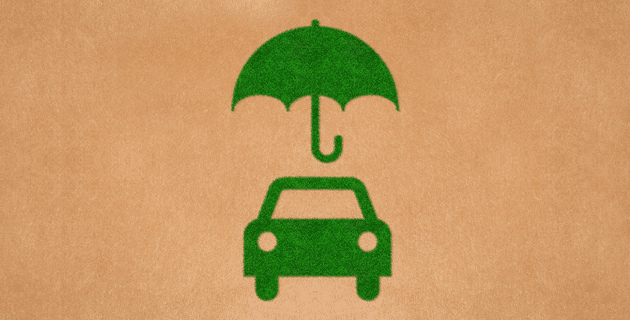
by California Casualty | Educators |
This article is written by former New Jersey first grade teacher, Felicia Niven.
Reading is one of the most important skills that we teach. Providing material at a student’s level is key to helping him or her cultivate a love for reading.
We’ve added to our list of leveled reading websites with some new favorites. These sites offer free, high-quality leveled reading passages for your students. For a look at Part 1 of this series, click here.
Epic!
(Grades K-6)
This site offers educators free access to an expansive digital library of popular books. You can create book collections to share with your students. Teachers and students can search by fiction or nonfiction and Lexile level. There’s also a read-aloud option and a dictionary look-up. However, it’s worth noting that your class login code is only active from 7 am to 3 pm when school is in session. This site is best for in-school use, where teachers can curate the content. Parents have to pay for after-school use and there are mixed reviews about the ability to easily source appropriate grade-level material.
National Geographic Explorer Magazine
(Grades K-6)
National Geographic’s student magazines are no longer in print, but the organization has compiled an impressive selection by grade level on its website. With adventurous names for each grade level, from Pathfinder to Pioneer, the titles alone are inspiring. The issues are beautifully illustrated, taking full advantage of nature videos to illustrate some articles. Issues are both in English and Spanish for bilingual readers. You’re provided passwords and QR codes that you can share with students so they may read on their digital devices. There’s also a teacher’s guide that includes lessons, Lexile levels, worksheets, and assessments for each story. Some stories are even linked to Kahoot quizzes.
Newsela
(Grades 3-12)
Newsela offers thousands of news articles for free, but you must create an account to access them. Content is aligned to state standards, with 5 different reading levels. Content is well suited for ELA, social studies, and science, and originates from such sources as Smithsonian, Associated Press, Highlights, and Scientific American. Your customized news library is curated by grade level. There is a filter for elementary content so that your students will only see age-appropriate content. Teachers can assign stories and monitor student progress.
Read Theory
(Grades K-12)
Students take a pre-test that assesses their reading level and then are assigned weekly leveled reading practice. The passages are. similar to those found on standardized tests, but sometimes a bit longer, and they come with quizzes to assess comprehension. Students who score well will gradually increase in difficulty. Those who score poorly will be given easier passages to boost confidence. Teachers can track and monitor performance against Lexile Levels. A paid version of this site allows the assignment of customized passages and more activities such as reading competitions.
Reading IQ
(Grades PreK to 6)
While schools have to pay for Reading IQ, you can apply for a free individual teacher account. The site gives you access to thousands of leveled books, fiction, and nonfiction, all organized by topic and grade level. There are picture books, chapter books, biographies, STEM books, and more. The stories have a real book feel, with pages that “turn.” Prereaders have the option for the book to be read aloud to students, and there are also guided reading options. For home access for students and other options, there is a paid version.
Reading is Fundamental
(Grades K-6)
RIF has a collection of leveled reading passages by grade and Lexile level. Texts are designed for independent reading and may be downloaded as PDFs and printed. There are easy, medium, and hard versions of the same content. However, books linked to the texts do come with a cost, if you choose to incorporate those.
Rewordify
(Upper Elementary – High School)
With Rewordify, you can easily take a text passage and create a simpler version. The site highlights and defines challenging words and phrases. This is ideal if you’re trying to accommodate different levels in your class with the same text. Rewordify also offers a range of classic literature, from the Adventures of Tom Sawyer to War and Peace. In addition, there are options for customized word lists and vocabulary quizzes and you can add links to online lesson plans. The free version lets you do a lot, but a paid account is necessary if you want to save and print documents.
TeachersPayTeachers
(Grades K-7)
Not surprisingly, teachers have developed their own leveled reading passages. It’s worth a visit to TeachersPayTeachers to find options for no-prep digital and printable passages. There are many available for free, and the list is constantly updated.
We’d love to hear from you. Do you have a favorite leveled reading website that you’d like to share? Write it in the comments.
This article is furnished by California Casualty, providing auto and home insurance to educators, law enforcement officers, firefighters, and nurses. Get a quote at 1.866.704.8614 or www.calcas.com.

by California Casualty | Auto Insurance Info |
You don’t have to wait for your auto policy to expire to change insurance companies. However, you do need to make sure you’re fully covered without any gaps in insurance. We’ve compiled some guidelines to help you decide if a change is right for you.
When should you think about changing policies?
While you don’t need a reason to change your auto insurance, there are some times when it makes sense for you to revisit your policy—even if you don’t change insurance companies. You may end up modifying your current policy to meet your evolving needs. For example:
• If you’ve had a major life change, such as getting married or divorced, you may need more or less insurance.
• If you’ve moved to a new zip code or state, the new location could affect your premium.
• If you’ve become a homeowner, you can bundle your auto and home and save money.
• If you’ve gone from working out of the home to remote work, your annual mileage may be less.
• If you’ve bought a new car, you will want to check insurance policy options.
• If your teenager is about to get his or her license, that will add to your policy.
• If your credit score has improved, you may qualify for a lower rate.
• If you’re unhappy with your current insurer, you can consider a change.
• If you’re approaching your renewal date, you can terminate a contract without cancellation fees.
Follow these steps to make the change.
Step 1: Consider your coverage options.
Figure out how much coverage you need. If you depend upon your care, you want to make sure that you have enough to replace it if necessary. Also, check your state laws. Some states will require you to have certain car insurance. If you lease or finance a car, your lender or lessor will require you to purchase collision and comprehensive insurance.
Step 2: Compare quotes from multiple insurers.
Get quotes from several insurers, and make sure you are comparing the same coverage, limits, and deductibles. Sometimes policies are cheaper because they don’t have the same coverage. This is also a good time to contact your current insurer to find out about discounts, or other ways to lower your cost. California Casualty offers discounts to nurses, educators, and first responders.
Step 3: Check for penalties and perks.
If you’re in the middle of your policy contract, there may be a penalty for canceling. Make sure you figure that into the decision to switch. You also will want to look for the perks, or little extras, that are offered. Some insurers offer inexpensive roadside assistance or accident forgiveness for qualified customers. Some have smartphone apps or are available 24/7 online.
Step 4: Do your research.
You want to know how your new insurer handles claims, and whether they have a good customer service rating. It may not be worth a lower price if it’s going to be a hassle dealing with the new company. Check out your insurer with the Better Business Bureau, JD Power, or the National Association of Insurance Commissioners.
Step 5: Make sure there’s no gap in coverage.
Car insurance lapses can be expensive, especially if you have an accident on the day in between. If you cancel one policy, make sure the other one is already in place. Your new insurance company can provide proof of insurance to your old company. However, they cannot cancel your policy. You need to do so. You’ll receive a refund for any unused portion. There may be a cancellation fee.
Pro Tip: Also remember to cancel automatic payments to your old insurer with your bank or credit card.
Step 6: Notify your insurer and lender.
Make sure to officially cancel your policy with your old insurer. Otherwise, your insurer will think you simply stopped paying your bill, and you could be liable for charges. Some insurers require 24 hours before canceling, so make sure you are aware of the terms. Also let your lender or lessor know about your new insurance if you are leasing or financing your car.
Step 7: Replace your insurance ID.
Once you make the change, ask for a digital copy of your insurance card. You can also order a printed card. Remember to place your new insurance card in your car’s glovebox.
Finally, if you have an open claim, wait to make a change.
You may not be able to change insurers if you have an open claim with your current insurance company. The claim has to be paid and closed. Also, the rate quoted from your new insurance company may not take into account that most recent claim. If that’s the case, you could have a big increase when you renew with the new company, or even be responsible for a retroactive fee.
Get started with a free quote today at mycalcas.com/quote.
This article is furnished by California Casualty, providing auto and home insurance to educators, law enforcement officers, firefighters, and nurses. Get a quote at 1.866.704.8614 or www.calcas.com.

by California Casualty | Helpful Tips, Homeowners Insurance Info, Safety |
If you’ve ever accidentally set off the smoke alarm, you know how loud it can be. But that loud beeping is actually a good thing. Smoke detectors give us that important warning to get safely away in case of a fire. Some detectors do double duty and also alert to carbon monoxide.
However, don’t assume your smoke detectors are working if you’ve installed them once and then never touched them again. Batteries wear out, and detectors have a lifespan of only about 10 years. That’s why it’s important to test yours regularly and there is no better time than when you are spring cleaning.
Two types of detectors
You may have a battery-powered smoke detector or yours may be hard-wired. They look the same from the outside but they’re a little different.
-
- A hard-wired detector is connected to your home’s electrical power with a cable that runs behind your wall or ceiling. They usually have a battery backup in case the power goes out. It is recommended that these detectors are installed by a professional electrician.
-
- The battery-powered detector snaps into a plastic base that is screwed onto the ceiling or wall. In many newer models, batteries are non-removable and come with a 10-year warranty.
Follow these steps
Both types of smoke detectors have a test button that allows you to check if they are working. Test your smoke detectors at least twice a year, once in the spring and once in the fall, and replace them as needed.
Step 1: Let family members know you’ll be testing.
A smoke alarm could cause family members to think there is a real emergency, so let them know that you are going to run a test. Since the sound could frighten small children and pets, you may want to test while they are not around. In addition, if your smoke detector is connected to an alarm company, notify them or you could have the fire department show up at your door.
Step 2: Position someone away from the detector.
Ask a family member or friend to stand on another level of the house, to make sure the alarm is heard. You want to make sure that the warning is heard downstairs in the basement and upstairs, in case someone might be there when it sounds.
Step 3: Press and hold the test button.
You may need to stand on a chair or a ladder to reach the button on your detector. You can use a broom handle if you are able to reach it that way. Note that it may take a few seconds to start. You will hear a loud siren. If there is no sound or a weak one, the batteries and/or the detector need replacement. Make sure to repeat this test with every smoke detector in the house or apartment.
Pro Tip: Some smoke detectors can go into programming mode if you hold the button too long. Wait for the detector to return to normal before testing it.
Step 4: Try this way to check your detector’s sensor.
The test button checks that your detector is powered. However, it doesn’t check the smoke sensor. You can do so with an aerosol spray that you can purchase for a few dollars at a hardware store. Follow the directions on the can to spray the “smoke.” This is a safer way to check the sensor than lighting matches. After the test, you can use a handheld vacuum to remove the material from the detector.
Pro Tip: Some detectors have a button to push to stop the alarm. Find out if yours has one before you run this test.
Other important tips
-
- If you have a detector where you have to change the batteries, you should replace them twice a year. (When we change the clocks is a great time to do that.) If your smoke detector is older than 10 years, you should replace it even if it is working.
-
- Dust and dirt build-up can affect your detector. Keep your detectors clean.
-
- Don’t paint your detector to match your décor. That can interfere with their ability to detect smoke.
-
- Make sure you have enough detectors in your home or apartment. You should have one in your kitchen, but 10 feet away from cooking to avoid false alarms. You also will want to place them inside every bedroom and outside each sleeping area, on every level of your home, and in places where you keep flammable substances like the garage.
You want to be fully prepared in case of a fire, and not just with smoke detectors. Talk with your insurer about your home and property to ensure that you are fully covered.
This article is furnished by California Casualty, providing auto and home insurance to educators, law enforcement officers, firefighters, and nurses. Get a quote at 1.866.704.8614 or www.calcas.com.

by California Casualty | Auto Insurance Info, Safety |
There are few things scarier than losing control of your car, but when it’s wet outside it can happen in an instant, no matter how safely you drive. This phenomenon is known as hydroplaning and it’s common during spring storms.
Here are some ways to reduce your chance of hydroplaning when you’re behind the wheel, and how to keep your car under control if you do.
What is hydroplaning?
Hydroplaning happens when your tires encounter more water than they can scatter. As a result, your tires lift up off the road and start riding on a layer of water. You lose traction, braking, and steering as your car skids and slides all over. It’s easy to crash. The more water there is, the more chance you might hydroplane. However, hydroplaning also can occur when roads are just slightly wet. The first 10 minutes of a light rain can be dangerous as water mixes with the oil residue and creates a slippery road surface.
Knowing what causes hydroplaning can help you take steps to avoid it. Hydroplaning is caused by a combination of three things:
-
- Wet conditions
- Your speed
- The condition of your tires
How to lower your chances of hydroplaning
1. Reduce your speed.
Hydroplaning is more likely to happen when you’re traveling faster than 35 mph. Plan your travels in the rain so that you can move more slowly. Also avoid sudden increases in speed, such as when passing cars. Those increases can cause your car to hydroplane.
2. Choose high-quality tires.
Your tires are your car’s first defense against hydroplaning. The tread or grooves are designed to push water aside. Make sure you invest in high-quality tires. Replace them when the tire tread has worn down. Driving on bald tires is especially dangerous in wet conditions.
3. Keep your tires well-maintained.
Make sure to rotate and balance your tires to help the tread wear evenly. Rotate the tires every other time you do an oil change, about every 7-10,000 miles. Also, make sure to keep your tires properly inflated.
4. Avoid puddles and standing water.
Spring storms can create puddles and standing water. If you see them, try not to drive through them. Also, avoid driving in the outer lanes where water tends to accumulate. Follow the tire tracks of the vehicle in front of you. Their tires already did some of the work of displacing the water. Just don’t follow too closely in case you have to slow down or stop unexpectedly.
5. Avoid hard braking and sharp or quick turns.
Sudden quick movements can cause hydroplaning. If you have to turn, take it slowly. Avoid any type of sudden braking. Stay in your lane.
6. Don’t use cruise control in the rain.
You’ll have to react immediately if you start to hydroplane. You don’t want to take extra time to disengage cruise control. In the moment, every second counts.
If you hydroplane, here’s what to do.
-
- Take your foot off the gas. This will help to slow you down.
-
- Do not slam on the brakes. That may be your natural instinct, but slamming on the brakes can cause your car to skid further out of control. If you need to brake, use a light pumping motion.
-
- Gently steer in the direction your car is sliding. This will help your tires realign and allow you to gain control of the steering.
-
- When you feel the tires reconnect with the road surface, take control of the steering. You’re now good to proceed on your journey. You may want to pull over to a safe spot to regroup and calm down before going on.
Accidents can happen. Make sure that your vehicle is fully covered for added peace of mind.
Safe travels.
This article is furnished by California Casualty, providing auto and home insurance to educators, law enforcement officers, firefighters, and nurses. Get a quote at 1.866.704.8614 or www.calcas.com.

by California Casualty | Auto Insurance Info |
Each year, 1 in every 6 people in the U.S. get a speeding ticket at the average cost of about $150. But tickets aren’t the only price you pay for speeding. Your auto insurance rates could take a hit; how much depends upon important factors like your driving record, the state where you live, and how fast you were traveling.
Your driving record is important.
Speeding increases your chances of causing an accident which impacts your policy and your pocketbook in a negative way. If your previous driving record includes speeding, accidents, and other violations, you could be considered risky to insure. Your insurer would likely raise your rates in that case. You may even have trouble getting insured.
For most states where California Casualty offers insurance, the maximum minor convictions per driver is two over a 3-year period. Once you reach three, you no longer meet our new business acceptability guidelines.
In addition, in most states, points are used to keep track of moving violations. You get points added to your license for each offense, with more points given for serious ones like driving under the influence (DUI). Too many points can cause your license to be suspended. (In the states that don’t use points, they still keep track of violations.)
From an insurance standpoint, a minor ticket like speeding is surcharged for a 3-year period from the date of conviction. Major convictions can impact your rates and acceptability from 3 to 10 years, depending on the state.
Your insurance company is not typically notified by the Department of Motor Vehicles that you have points on your license because of a speeding violation. However, before quoting you a price, an insurer will order a new motor vehicle report to get updated information.
Speed and location make a difference.
There’s a difference if you’re going 5 miles over the speed limit or 25. The latter may be considered reckless driving, a more serious charge.
NerdWallet found that car insurance typically increases about 25% after a speeding ticket.
Insurance.com notes that if you are 11-15 miles over the speed limit, that can raise your rate by 20% on average. If you have two tickets going that speed, that can raise your rate by an average of 43%.
It also varies by state. A speeding ticket in Texas for 16 miles over the limit costs customers an average insurance increase of $600 over three years. Nationwide, the average speeding ticket raises rates $1,380 over three years.
These increases don’t always happen right away. They are usually calculated at the time that you renew your auto policy. Of course, speeding charges can impact you immediately if you start a new policy or make changes to your existing policy. Be ready.
Here’s how to lower your premium after a speeding ticket.
Paying the speeding fine and moving on may seem like that best thing to do. However, you can take extra steps that could help save you money on your future insurance premium.
• Take a defensive driving course. Ask for the court’s permission to take a driver safety course to help get your ticket dismissed or the points reduced. You may need to pay some upfront fees to do so, such as court costs and for the driving course. You’ll also have to spend 6 hours in training for a refresher on safety like how to share the road with others. However, it may be worth it to save money on your insurance premiums in the future. Be aware that some states limit the number of times you can take a driving class within a certain period of time.
• Ask for a deferred deposition or adjudication. This may be an option in your state if you were going less than 25 mph above the posted speed limit. Ask the court to delay a decision on your case for a specified timeframe. You’ll be placed on probation during this time period. If you follow the rules, your case may be dismissed. You most likely will have to pay additional court fees for this option.
• Ask for mitigation. While you can plead guilty to speeding, you can explain the circumstances to the court and ask if they can reduce the points on your license. They may even be able to change the charge to a non-moving violation. If reduced to a VEQ (Vehicle Equipment Violation), the ticket is ignored for surcharging and for acceptability purposes for all states. You likely will still have to pay a fine, so come prepared.
• Contest the ticket. If you feel the ticket was in error, it is in your best interests to contest it. Go to court, and plead not guilty. You may wish to bring a lawyer to present your strongest case.
• Keep track and notify your insurer. One benefit of California Casualty is that if you call us the day after a minor conviction turns 3 years old, we will remove the surcharge. At that time, we’ll order an updated Motor Vehicle Report so we have all of the current information.
This article is furnished by California Casualty, providing auto and home insurance to educators, law enforcement officers, firefighters, and nurses. Get a quote at 1.866.704.8614 or www.calcas.com.





